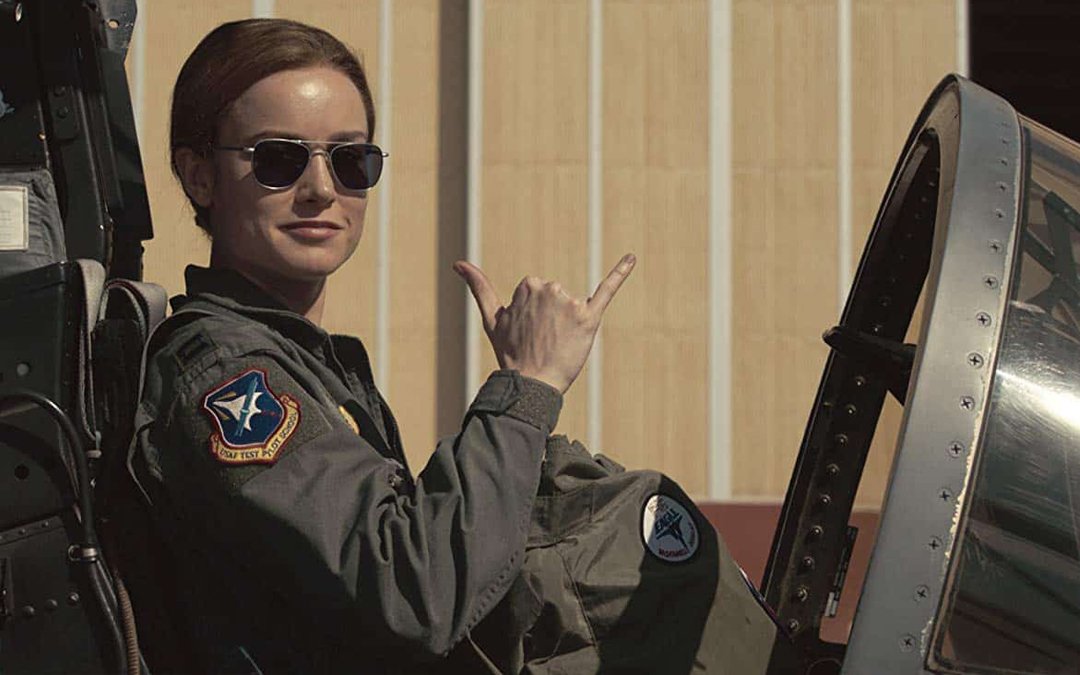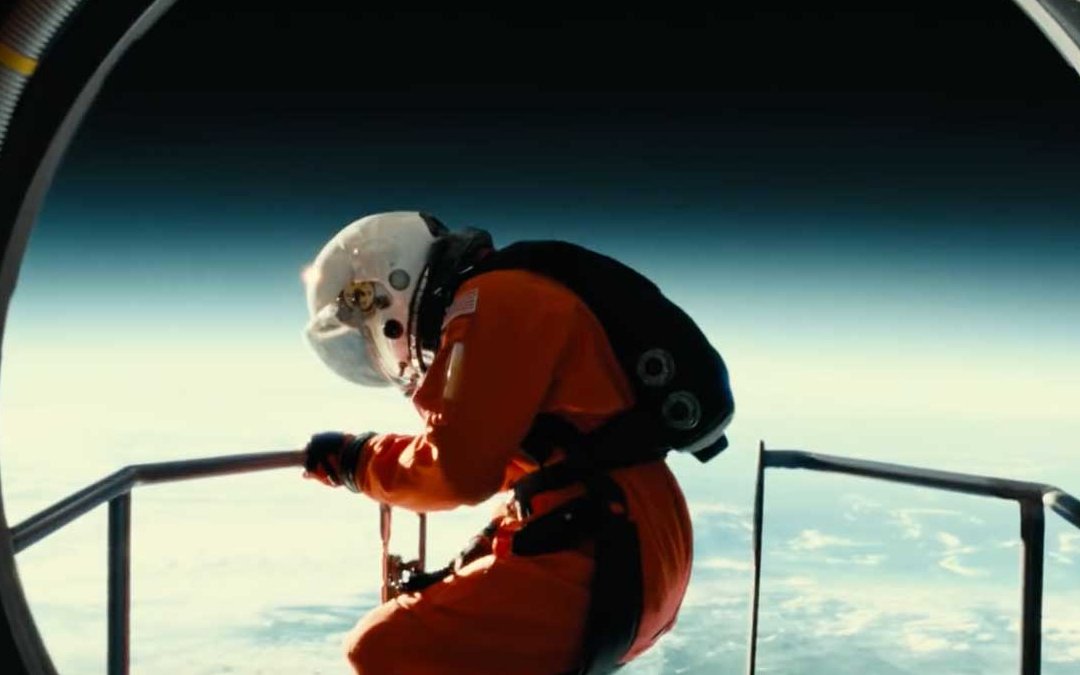All the Write Moves: 'First Man'
October 30, 2018
Even though space exploration remains a tangential element of the global conversation, especially with long-range planning underway for a potential manned mission to Mars, earthbound concerns have occupied the forefront of the human experience for quite some time. Therefore, it’s an interesting moment for the arrival of First Man, an engrossing character study of Neil Armstrong, who in 1969 became the first person to walk on the surface of the moon.
As directed by wunderkind Damien Chazelle from a script by Josh Singer (who based his work on James R. Hansen’s authorized Armstrong biography), First Man portrays Armstrong as a quiet man of extraordinary focus, intelligence and perseverance. Moreover, the picture depicts Armstrong as an individual defined by tragedy, because well before he joins the Gemini and Apollo programs at NASA, he and his wife, Janet, lose their two-year-old daughter to brain cancer. Instead of succumbing to the gravitational pull of grief, Armstrong channels his anguish into piercing one of the human experience’s outer barriers.
Much will be made during this awards season of Chazelle’s bravura direction, and rightly so. Considerable praise will also be heaped upon the restrained performances of Ryan Gosling, who plays Armstrong, and Claire Foy, who plays his wife, Janet. Yet none of these artists could have taken flight without the launching pad of an impeccable screenplay. And though much more could be written about the high-level craft on display throughout First Man, three aspects of the movie’s scripting merit especially close examination.
The write stuff
Woven into First Man are tasteful references to great space exploration movies of the past, notably The Right Stuff (1983), which serves as a sort of prequel to First Man by detailing NASA missions that preceded Armstrong’s moon shot. Based on Tom Wolfe’s best-selling book of the same name, The Right Stuff celebrates pioneering aviators including Chuck Yeager, who is also portrayed onscreen in First Man. And like The Right Stuff, Chazelle’s film employs a degree of artistic license to accentuate the drama of certain historical events.
In one harrowing sequence, Armstrong conducts a flight test on Earth of a prototype lunar module, but the vehicle loses flight control. He’s forced to eject from a relatively low altitude and then parachute to the ground for a rough landing immediately after the module crashes and explodes. Once Armstrong rises from the landing, we see that his protective mask is broken and that one side of his face is burned and scarred. Yet he walks away from the crash with the burning wreck of the module visible on the other side of the screen.
For those who know The Right Stuff, the climactic shot of Armstrong juxtaposed with the wreck is a direct reference to a shot of Yeager (played by Sam Shepard) in The Right Stuff. But it also represents a different link between the two pictures, because in real life, Armstrong’s face wasn’t damaged during that particular crash. Chazelle and Singer exaggerate the severity of the moment for dramatic purposes, but not so greatly that the scene becomes an outright lie; as in life, Armstrong escapes the crash rattled but undeterred.
The teachable moment here is that whenever you tell a story based on real events, slavish devotion to concrete facts can be inhibiting. Therefore, one threshold that responsible screenwriters often apply in these circumstances is the concept of emotional honesty. As dramatized in First Man, the crash scene underscores what the event might have felt like, even though it’s not a documentary recreation of the event. In other words, leave history to the historians — but don’t violate history so irresponsibly as to deceive viewers.
Takeaway: Within reason, embellishment helps bring history alive
Keep watching the skies
One of the simplest tropes in First Man involves Armstrong looking up from the surface of the earth to see the moon in the night sky. This imagery recurs again and again throughout First Man, and it’s a reflection of Chazelle’s directorial good taste that the trope never gets overstated. For instance, there’s never a scene of Armstrong looking at the moon and then explaining what he’s thinking. The closest Chazelle gets to editorializing is the final glimpse at the moon before the Apollo 11 launch; in that instance, the moon is oddly colored and partially occluded by clouds, an overt example of literary foreshadowing.
While it’s tempting to consider this trope a directorial flourish, the moments of Armstrong looking at the moon were almost certainly prescribed in the screenplay for purposes of production scheduling. So even though this element is purely visual, it’s still an example of deliberate and thoughtful screenwriting. What other writers can learn from this is that very often, the simplest solution to a storytelling problem is also the best solution. In fact, a better way to describe such solutions is “elegant,” as opposed to simple.
First Man needs to establish a tangible relationship between Armstrong and the moon for two reasons: First, to give narrative shape so that viewers understand the protagonist’s goal, and second, to give poetic symmetry so that when Armstrong reaches the lunar surface, we realize he has fulfilled his destiny. Chazelle and Singer could have used all sorts of cutesy screenwriting tricks — such as working moon-shaped imagery into various scenes or conjuring moments when Armstrong hears songs referencing the moon — but somewhere during their creative process, they realized the direct approach would net the most powerful results. In essence, they got out of their own way, thus creating the enviable illusion that the story is telling itself.
Takeaway: The shortest distance between two narrative points is a straight line
Let the mystery be
By far the boldest aspect of First Man is the film’s motif of ambiguity. The filmmakers string together enough events for viewers to arrive at a coherent impression of Armstrong, but at the same time the filmmakers don’t try to explain every aspect of Armstrong’s personality. For instance, the tragedy that opens the film echoes powerfully during the final scenes, suggesting one reason why Armstrong might have been so driven to explore life beyond the limits of the known human experience. As presented in First Man, Armstrong’s determination to escape Earth, however fleetingly, is an act of spiritual validation.
But even with input from Armstrong, by way of his cooperation with a biographer, the film cannot take us inside Armstrong’s mind on that fateful day in July 1969. Instead, Chazelle and Singer sketch what the moment of reaching the moon might have felt like on a textural level, and they provide an emotional context to imagine some of the emotions and thoughts that might have been at the front of Armstrong’s consciousness. Even Armstrong’s eternal remark about “one giant leap for mankind” has secrets, since the filmmakers never articulate the process by which Armstrong arrived at that turn of phrase.
Perhaps the best argument for the approach taken by First Man is that ambiguity reflects the film’s overall setting and theme. The number of things humankind does not know about outer space dwarfs the handful of things that are known. Armstrong’s ability to describe how it feels to walk on the moon doesn’t begin to explain, definitively, how the moon came to be, or how the moon fits into the greater plan of the universe, if there is such a plan. Therefore the most poetic reading of First Man is that it draws a parallel between the enigmas of the universe and the enigmas of the human soul.
From a screenwriting perspective, this is difficult terrain, since audiences have been conditioned to expect explanations from movies, and to expect unlimited access to the inner lives of movie characters. So for some viewers, the opaqueness of First Man will seem fitting, and for others, it will seem like a narrative shortcoming, as if Chazelle and Singer didn’t complete their task.
The point is that not every narrative question benefits from an answer; sometimes, raising the question in a poignant way accomplishes so much more.
Takeaway: Stimulating audience curiosity doesn’t always obligate you to satisfy audience curiosity
Written by: Peter Hanson
Peter Hanson is a Los Angeles-based writer, filmmaker and teacher. He directed the screenwriting documentary Tales from the Script, and he teaches at Pepperdine University and UCLA Extension. He provides script consulting at www.GrandRiverFilms.com.



